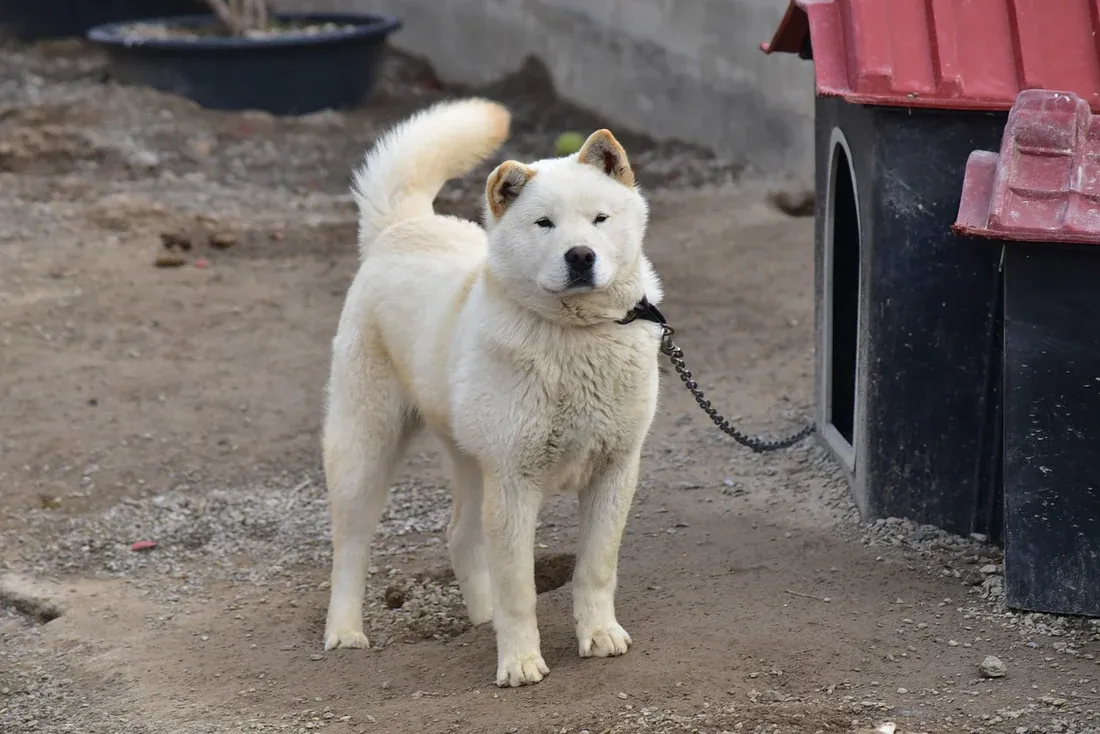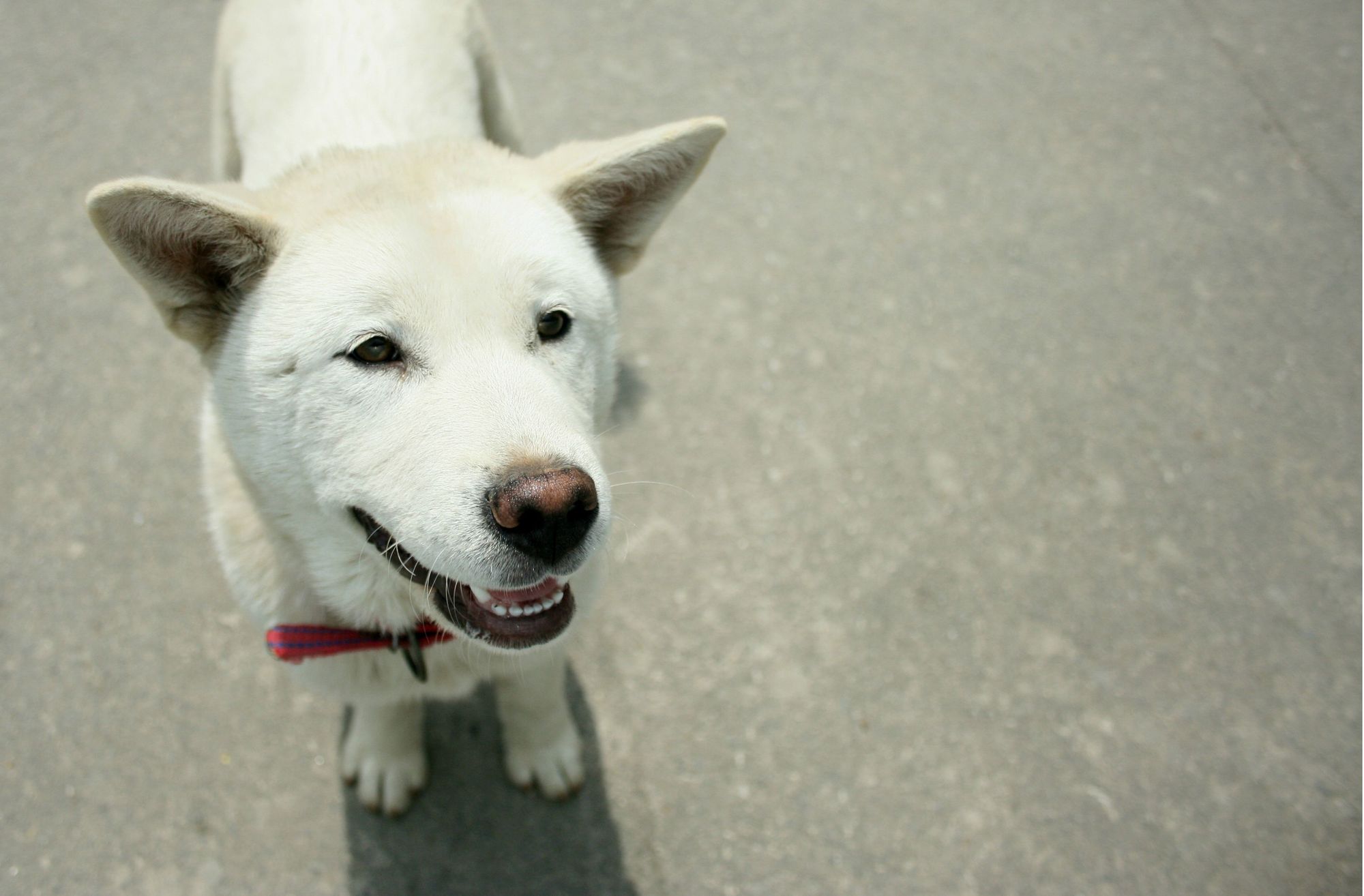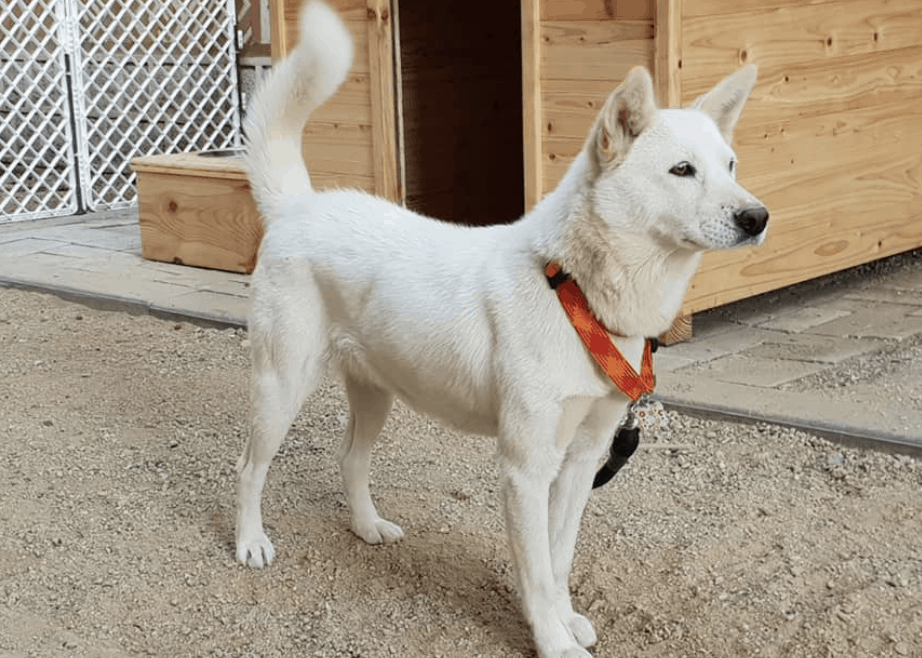Jindo dogs, renowned for their loyalty and intelligence, often captivate dog enthusiasts. One of the most frequently asked questions about these canines revolves around their size. In this article, we'll delve into the dimensions of Jindo dogs, exploring their history, physical characteristics, and how they compare to other breeds.

Historical Background
So, you're curious about the roots of the fabulous Jindo breed? Well, buckle up because we're about to take a trip through time and explore the historical background of these incredible dogs.
Jindos hail from the beautiful landscapes of South Korea, and their history is as captivating as their gaze. Originally bred for hunting and guarding, these canines played a vital role in the lives of Korean communities. Picture this – a loyal companion trotting alongside hunters, showcasing not only their physical prowess but also their unwavering loyalty.
Over the years, Jindos became more than just skilled hunters; they became integral to Korean culture. In fact, they're designated as a National Treasure in South Korea, emphasizing their cultural significance. So, when you're admiring a Jindo, remember, you're not just looking at a dog; you're witnessing a piece of living history.

Physical Characteristics
Now, let's talk about what makes a Jindo look like a Jindo. These dogs are the definition of distinctive. Picture a dog with a double coat – straight, dense outer fur and a soft undercoat. It's not just for looks; it's a practical design to handle different weather conditions.
Their ears? Oh, they stand tall and proud, giving them an alert and attentive expression. And that tail? Curled up over the back, showing off confidence and a touch of elegance. The combination of these features results in a dog that stands out in any crowd.
But here's the kicker – the real charm lies in the eyes. Dark, almond-shaped eyes that reflect intelligence and curiosity. It's like they're always ready for the next adventure. So, when you ask, "How big is a Jindo?" remember, it's not just about size; it's about a package of unique and striking features.
Temperament and Behavior
Alright, let's dive into the Jindo psyche. Understanding their temperament and behavior is like peeling back the layers of an exciting canine onion.

Loyalty? Check. These dogs are fiercely loyal to their families. You've got a friend for life, no doubt about it. But, here's the twist – they're also independent thinkers. Yep, they've got a mind of their own. It's not stubbornness; it's just that they know what they want.
Intelligence is the name of the game with Jindos. They're not the kind to blindly follow orders. If they sense something's off, they'll let you know. So, training them? It's a bit of a challenge, but trust me, it's worth it. You're not just teaching commands; you're engaging with a sharp mind.
Oh, and adaptability? They've got it down to an art. Whether in a bustling city or a quiet countryside, Jindos roll with the punches, showcasing a remarkable ability to adapt to different environments.
Training Challenges
So, you've decided to bring a Jindo into your life? Fantastic choice! But, fair warning, training these furballs comes with its own set of challenges – challenges that are as unique as the breed itself.
First things first, independence. Jindos are not your average "yes sir, right away sir" kind of dogs. Nope, they're more of the "let me think about it" variety. They've got this incredible intelligence, and they're not afraid to use it. So, when it comes to training, be prepared to engage their minds. A bored Jindo is a mischief-maker, so keeping their brains active is key.
Now, let's talk stubbornness. Some might call it stubborn, we prefer to think of it as a strong will. Jindos have a sense of autonomy that can be both charming and challenging. They like to do things their way, and convincing them otherwise requires patience and consistency. Positive reinforcement is your best friend here. Treats, praise, and a bit of creativity go a long way.
Socialization is another aspect to tackle. While Jindos are fiercely loyal to their families, they can be a bit reserved around strangers or other dogs. Early and consistent socialization is vital to ensure they grow up to be well-rounded dogs. Exposing them to different people, environments, and situations from an early age can make a significant difference.
In essence, training a Jindo is not for the faint of heart, but it's a journey filled with rewards. You're not just teaching them tricks; you're building a bond with a thinking, feeling companion.
Size Variations
Now, let's get to the nitty-gritty of size. You might be wondering, "How big is a Jindo?" Well, there's no one-size-fits-all answer.
While there are standard size specifications for the breed, individual Jindos can vary in size. Genetics, diet, and living conditions all play a role in determining how big a Jindo will grow. Generally, male Jindos are a bit larger than females, but like any rule, there are exceptions.

The environment they live in also influences their size. A Jindo living in an apartment might not grow as large as one with a spacious backyard for daily romps. It's all about context, baby!
And let's not forget age. Like humans, Jindos go through growth spurts. They usually reach their full size by the age of 12-18 months. So, if you're thinking of adopting a Jindo puppy, get ready for a few months of growth chart excitement.
In the grand scheme of things, the size of a Jindo is a bit like predicting the weather – you've got some guidelines, but there's always room for surprises.
Comparisons with Other Breeds
Now, let's play the comparison game. How does a Jindo stack up against other breeds? Spoiler alert: they've got a unique charm that sets them apart.
Size-wise, Jindos fall into the medium to medium-large category. Picture them as the Goldilocks of the dog world – not too big, not too small, just right. Now, compare that to breeds like the Shiba Inu or the Akita, and you'll see a distinct difference.
Temperament-wise, Jindos are often compared to the Shiba Inu. Both breeds share traits like independence and intelligence. However, Jindos are known for their unwavering loyalty, setting them apart in the loyalty department.
When it comes to looks, Jindos are often likened to the Shikoku Inu. Both breeds hail from Japan, and they share similar physical characteristics. It's like having distant cousins from the Land of the Rising Sun.
In the end, while comparisons provide some context, each breed brings its own unique flavor to the table. So, when you're asking, "How big is a Jindo?" consider not just the size but the distinctive qualities that make them stand out in the canine crowd.
Health Considerations
Alright, let's talk about keeping your Jindo in tip-top shape. Health considerations are crucial because a healthy Jindo is a happy Jindo.
First things first, like any breed, Jindos have their share of common health issues. Keep an eye out for hip dysplasia, cataracts, and hypothyroidism. Regular vet check-ups are your best weapon in catching these issues early.
Maintaining a healthy weight is vital. Jindos are active dogs, so make sure they get enough exercise to keep those muscles toned. A well-balanced diet is also key – none of that junk food nonsense. A happy, healthy Jindo is a dog that's ready for whatever adventures come their way.
And speaking of adventures, Jindos can be prone to allergies, so keep an eye out for any signs of skin irritation or unusual behavior. It might take a bit of detective work to figure out the cause, but once you do, it's smooth sailing.
Remember, a little preventive care goes a long way. Regular exercise, a healthy diet, and a vigilant eye for any changes in behavior – that's your recipe for a thriving Jindo.
Jindo as a Family Pet
So, you're thinking about adding a Jindo to your family? Excellent choice! These dogs bring a unique blend of loyalty, intelligence, and charm to the table.
First off, loyalty – it's practically woven into their DNA. Your Jindo will become your shadow, your confidant, and your partner in crime. They're not just pets; they're family.
But, and it's a big but, they're not the overly clingy type. Jindos have a sense of independence that sets them apart. They'll give you your space when you need it but be right by your side when it counts.
Now, let's talk about the kiddos. Jindos can be fantastic with children, but early socialization is key. Teach the little ones to respect the dog's space, and you'll have a match made in heaven. They're not just family pets; they're guardians with a heart of gold.
And get ready for some fun family outings because Jindos love a good adventure. Hiking, running, or just a leisurely stroll – they're up for it all. So, if you're an active family looking for a four-legged companion, the Jindo might just be your match made in doggy heaven.
Famous Jindos
Ever heard of a celebrity Jindo? Well, get ready to be star-struck because there are some famous Jindos that have left their paw prints on the world.
One notable mention is Dukboki, a Jindo who became a symbol of hope and resilience during the Korean War. Dukboki's loyalty and bravery touched the hearts of many, earning him a place in history.
In more recent times, Jindos have made appearances in popular culture. From TV shows to movies, these dogs are stealing the spotlight. Their distinctive looks and intelligent demeanor make them a director's dream.
And let's not forget the social media influencers – Jindos with their own fan following, sharing their daily adventures and winning hearts worldwide.
Jindo in Different Climates
Now, let's talk about the Jindo's ability to handle the elements – the weather warriors, if you will. Jindos, with their double coats and sturdy builds, are quite adaptable to different climates.
Whether you're in the snowy landscapes of the north or the sun-soaked beaches down south, Jindos handle it like pros. That dense outer fur? It provides insulation in the cold and acts as a natural cooling system in the heat. It's like having a built-in thermostat.
But here's the kicker – while they can handle diverse climates, they still have their preferences. Jindos might not be the biggest fans of extreme heat, so if you're in scorching territory, make sure they have some shade and cool water. It's all about keeping that fabulous coat in top condition.
So, if you're wondering if a Jindo can handle your local weather, the answer is likely a confident yes. They're like the James Bond of dogs – adaptable, cool under pressure, and always ready for the next mission.

Myths and Misconceptions
Time to bust some myths and set the record straight about our beloved Jindos. These happy dogs have earned a reputation, but let's separate fact from fiction.
Myth 1: Jindos are aggressive.
Reality: Not true! Jindos are known for their loyalty and can be reserved around strangers, but with proper socialization, they're not aggressive. They're more like discerning judges, sizing up the situation before giving their approval.
Myth 2: Jindos can't be trained.
Reality: Wrong again! They're intelligent, which means they can be a bit independent, but with positive reinforcement and consistent training, Jindos can be well-behaved companions. It just takes a bit of patience.
Myth 3: Jindos are aloof and distant.
Reality: Far from it! While they have an independent streak, Jindos form strong bonds with their families. They might not be overly cuddly, but their loyalty runs deep.
Myth 4: Jindos don't get along with other pets.
Reality: It depends. Early socialization is key. With proper introductions and a bit of patience, Jindos can coexist peacefully with other pets.
Myth 5: Jindos are too high-maintenance.
Reality: Like any dog, they require care, but they're not overly high-maintenance. Regular grooming, exercise, and vet check-ups keep them happy and healthy.
So, there you have it – debunked and clarified. Jindos are not the mythical creatures some make them out to be; they're just unique individuals with their own quirks.
Jindo Size FAQs
Let's address the burning questions about Jindo size. When it comes to these fabulous dogs, size matters, but so do the details.
Q1: Are male Jindos larger than females?
A1: Generally, yes. Males tend to be slightly larger, but individual variations exist.
Q2: Do Jindos adapt well to apartment living?
A2: While possible, Jindos thrive in environments with ample space for exercise. Regular walks are a must.
Q3: How much exercise does a Jindo need daily?
A3: Jindos are active dogs and benefit from at least an hour of exercise each day. It's not just about physical activity; it's mental stimulation too.
Q4: Can Jindos live in hot climates?
A4: Yes, they can adapt, but precautions should be taken to prevent overheating. Keep them cool and hydrated, especially in the heat.
Q5: At what age is a Jindo considered fully grown?
A5: Jindos typically reach their full size by 12-18 months. It's like watching them bloom into their majestic selves.
So, there you have it – your guide to Jindo size, myths, and the lowdown on their adaptability to different climates. Ready to welcome a Jindo into your life? It's a journey filled with surprises, loyalty, and a whole lot of canine charm.